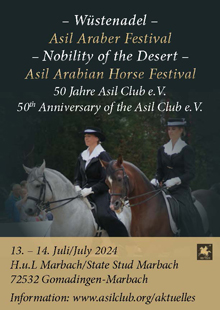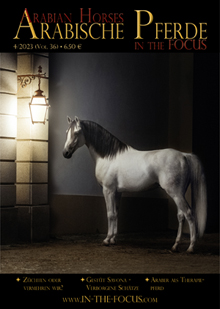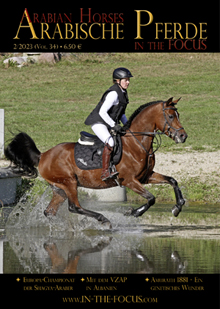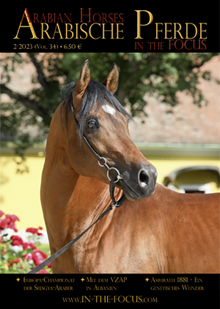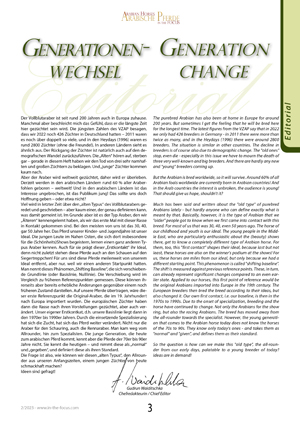
The purebred Arabian has also been at home in Europe for around 200 years. But sometimes I get the feeling that he will be bred here for the longest time. The latest figures from the VZAP say that in 2022 we only had 426 breeders in Germany – in 2011 there were more than twice as many, and in the Heydays (1996) there were around 2800 breeders. The situation is similar in other countries. The decline in breeders is of course also due to demographic change. The “old ones” stop breeding, even die – and there are hardly any new and “young” breeders coming up.
But the Arabian is bred worldwide, so it will survive. Around 60% of all Arabian foals worldwide are currently born in Arab countries! And in the Arab countries the interest is unbroken, the audience is young! That should give us hope, shouldn’t it?
Much has been said and written about the “old type” of purebred Arabians lately – but hardly anyone who can define exactly what is meant by that. Basically, however, it is the type of Arabian that we “older” people got to know when we first came into contact with this breed. For most of us that was 30, 40, even 50 years ago. The horse of our childhood and youth is our ideal. The young people in the Middle East, who are particularly enthusiastic about the (beauty) shows there, get to know a completely different type of Arabian horse. For them, too, this “first contact” shapes their ideal, because last but not least, these horses are also on the winner’s podium at the shows! For us, these horses are miles from our ideal, but only because we had a different starting point. This phenomenon is called “shifting baseline”. The shift is measured against previous reference points. These, in turn, can already represent significant changes compared to an even earlier state. Applied to our horses, this first point of reference would be the original Arabians imported into Europe in the 19th century. The European breeders then bred the breed according to their ideas, but also changed it. Our own first contact, i.e. our baseline, is then in the 1970s to 1990s. Due to the onset of specialization, breeding and the horse have continued to change. Not only the Arabians for the show ring, but also the racing Arabians. The breed has moved away from the all-rounder towards the specialist. However, the young generation that comes to the Arabian horse today does not know the horses of the 70s to 90s. They know only today’s ones – and takes them as “normal” and “given”, and defines them as their standard.
So the question is how can we make this “old type”, the all-rounder from our early days, palatable to a young breeder of today?
Ideas are in demand!
Gudrun Waiditschka








